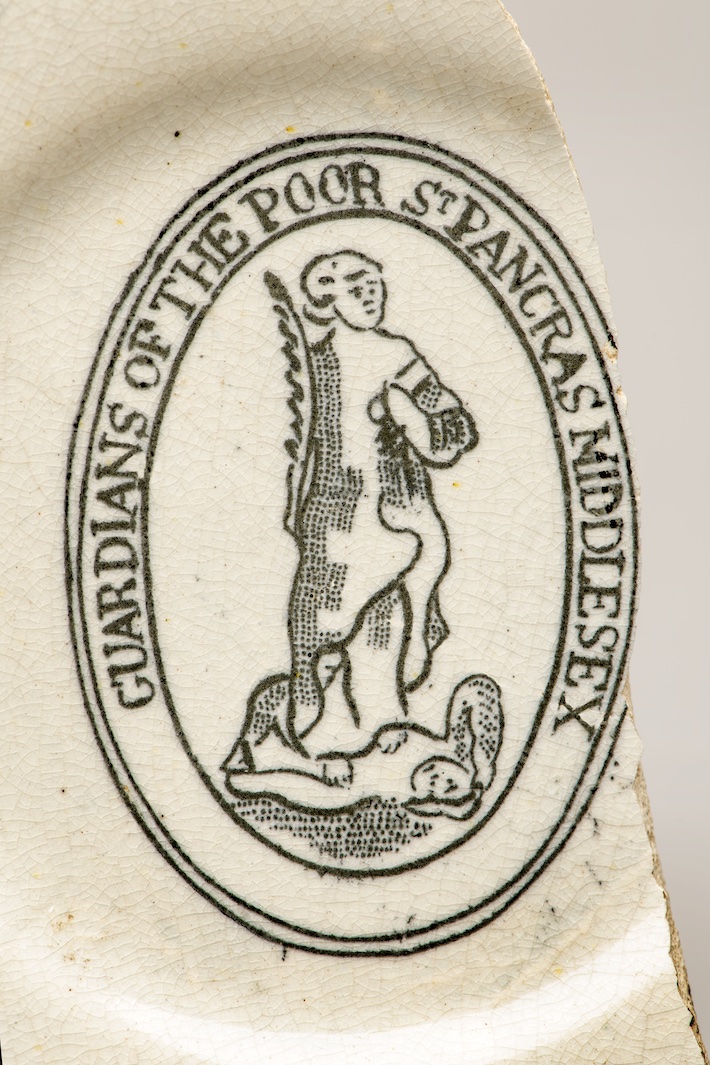 LONDON, ENGLAND—According to a report in The Guardian, Gwilym Williams of the Museum of London Archaeology (MOLA) and his colleagues have excavated the site of London’s infamous St. Pancras workhouse, where they uncovered rooms with fireplaces and walls covered with blue plaster. The institution also featured gardens, an infirmary, and a nursery, the study revealed. Artifacts recovered from the workhouse site include crockery marked with an image of St. Pancras and the slogan, “Guardians of the Poor St. Pancras Middlesex”; a bone toothbrush with horsehair bristles; and a ceramic hot water bottle. Williams thinks that this workhouse structure, completed in 1809, may have been intended to provide support, food, and basic shelter, rather than the punishment described in historical and popular accounts. Although St. Pancras was designed to house 500 people, by 1850, more than 1,900 lived there. Overcrowding likely led to the miserable, unhealthy living conditions, Williams explained. To read more about nineteenth-century London, go to "Haunt of the Resurrection Men."
LONDON, ENGLAND—According to a report in The Guardian, Gwilym Williams of the Museum of London Archaeology (MOLA) and his colleagues have excavated the site of London’s infamous St. Pancras workhouse, where they uncovered rooms with fireplaces and walls covered with blue plaster. The institution also featured gardens, an infirmary, and a nursery, the study revealed. Artifacts recovered from the workhouse site include crockery marked with an image of St. Pancras and the slogan, “Guardians of the Poor St. Pancras Middlesex”; a bone toothbrush with horsehair bristles; and a ceramic hot water bottle. Williams thinks that this workhouse structure, completed in 1809, may have been intended to provide support, food, and basic shelter, rather than the punishment described in historical and popular accounts. Although St. Pancras was designed to house 500 people, by 1850, more than 1,900 lived there. Overcrowding likely led to the miserable, unhealthy living conditions, Williams explained. To read more about nineteenth-century London, go to "Haunt of the Resurrection Men."
Site of London’s St. Pancras Workhouse Excavated
